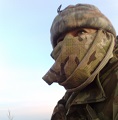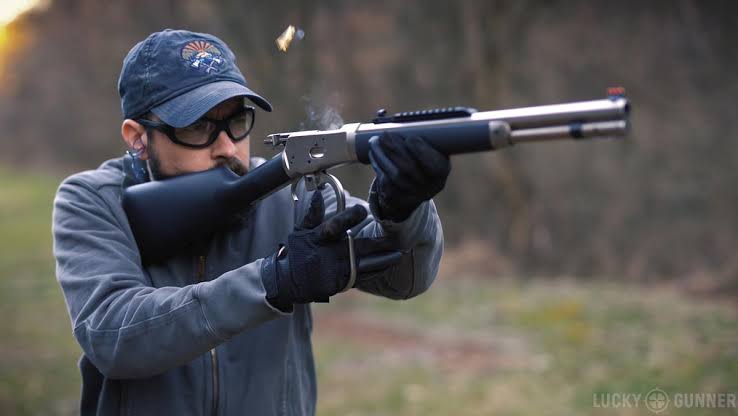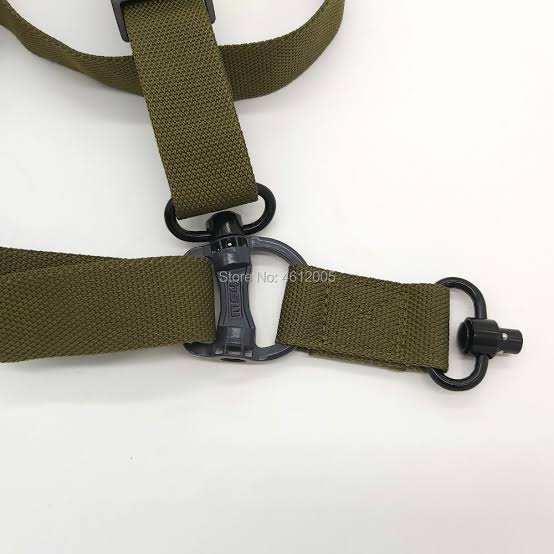Converting lite bolt rifles to a scout configuration
67 posts
• Page 1 of 3 • 1, 2, 3
Converting lite bolt rifles to a scout configuration
So.... was chatting with Bladeracer today and I posed a question; how would one convert a Lite configuration standard bolt action rifle like a Howa 1500 sporter or Tikka Lite into a scout rifle, primarily for snap shooting/fast hunting?
I like the idea of having back up iron sights (impossible to get on my left handed Tikkas standard), putting a scout scope on etc, just not sure how I would go about it....
Can everyone chip in and help me out with ideas for rails, iron sights, good value scout scopes, sling ideas etc?
Cheers (still learning!)
I like the idea of having back up iron sights (impossible to get on my left handed Tikkas standard), putting a scout scope on etc, just not sure how I would go about it....
Can everyone chip in and help me out with ideas for rails, iron sights, good value scout scopes, sling ideas etc?
Cheers (still learning!)
- Tubs
- Corporal

- Posts: 306
- New South Wales
Re: Converting lite bolt rifles to a scout configuration
Red dots are fine for snaps. Heck red dots are fine for SR applications also, provided the windage/elevation adjust is practical.
At what point does lack of maintenance become patina?
-

in2anity - Lieutenant Colonel

- Posts: 3107
- New South Wales
Re: Converting lite bolt rifles to a scout configuration
Tubs
The first question that comes to mind is... Why, what is preventing your light configuration standard bolt action rifle from doing the job it is supposed to be able to do?
One factor I suspect would be a stock configuration that might not be suitable for comfortable snap offhand shooting. Thank you "american classic" stock configuration.
The scout rifle concept was championed by American Jeff Cooper in the 80's and 90's and it made sense.
It was based on an ex-military bolt action rifle, with a carbine length barrel and an extended eye relief scope mounted so as to provide unobstructed access for stripper clip loading.
The modern commercial renditions of a scout rifle are probably OK as such but they tend to follow modern fads and mostly miss the key aspects of pointability and ease of rapid reloads.
The first question that comes to mind is... Why, what is preventing your light configuration standard bolt action rifle from doing the job it is supposed to be able to do?
One factor I suspect would be a stock configuration that might not be suitable for comfortable snap offhand shooting. Thank you "american classic" stock configuration.
The scout rifle concept was championed by American Jeff Cooper in the 80's and 90's and it made sense.
It was based on an ex-military bolt action rifle, with a carbine length barrel and an extended eye relief scope mounted so as to provide unobstructed access for stripper clip loading.
The modern commercial renditions of a scout rifle are probably OK as such but they tend to follow modern fads and mostly miss the key aspects of pointability and ease of rapid reloads.
"Anything is possible if you don't know what you are talking about."
"There is no expedient to which a man will not resort to avoid the real labor of thinking." Sir Joshua Reynolds
"There is no expedient to which a man will not resort to avoid the real labor of thinking." Sir Joshua Reynolds
- straightshooter
- Warrant Officer C1

- Posts: 1399
- New South Wales
Re: Converting lite bolt rifles to a scout configuration
straightshooter wrote:Tubs
The first question that comes to mind is... Why, what is preventing your light configuration standard bolt action rifle from doing the job it is supposed to be able to do?
One factor I suspect would be a stock configuration that might not be suitable for comfortable snap offhand shooting. Thank you "american classic" stock configuration.
The scout rifle concept was championed by American Jeff Cooper in the 80's and 90's and it made sense.
It was based on an ex-military bolt action rifle, with a carbine length barrel and an extended eye relief scope mounted so as to provide unobstructed access for stripper clip loading.
The modern commercial renditions of a scout rifle are probably OK as such but they tend to follow modern fads and mostly miss the key aspects of pointability and ease of rapid reloads.
Want iron sights as a backup Might keep scopes as per current but still not ideal for quick work
- Tubs
- Corporal

- Posts: 306
- New South Wales
Re: Converting lite bolt rifles to a scout configuration
Tubs wrote:So.... was chatting with Bladeracer today and I posed a question; how would one convert a Lite configuration standard bolt action rifle like a Howa 1500 sporter or Tikka Lite into a scout rifle, primarily for snap shooting/fast hunting?
I like the idea of having back up iron sights (impossible to get on my left handed Tikkas standard), putting a scout scope on etc, just not sure how I would go about it....
Can everyone chip in and help me out with ideas for rails, iron sights, good value scout scopes, sling ideas etc?
Cheers (still learning!)
Hi Tubs, nice chatting
I came down with a cold last night that the young fella had on the weekend, so my brain is not functioning well today
First up, I don't think the original concept is valid these days, so if you want to build something along those lines it will be a different discussion, my view of a modern scout rifle is light, compact (lighter and shorter than Cooper's idea), detachable mag, and versatile. With modern bullets the chambering is no longer an issue, 95gn bullets make the lowly .223Rem pretty punchy now, but 7mm-08 is still the ideal. I also don't consider a bipod or fancy sling to be requirements, more a nice bonus if you can make them light enough to not compromise the weight and compactness goals. A QD single-point sling stays on you, not the rifle, so it doesn't flap about or get caught on stuff when you're trying to get a sight picture.
I think your biggest issue is likely to be fitting a front sight. If the muzzle is threaded, you can simply braze a blade onto a thread protector, then file it to the required height. If you're going to cut the barrel anyway I would thread it regardless to have the option of running hiders or brakes. I bought an M14 flash hider/front sight years ago that I like. You could thread your muzzle to take it, or make/buy a thread adaptor, which is how I ran it on the .204 (before I bullpupped it).
Otherwise you can buy sight ramps (brownells.com) with various diameter curves to fit your barrel diameter. You can drill and tap (barrels are not hard) for a screw to attach it, or simply braze it or glue it on with epoxy. The ramp then gives you a dovetail to accept a variety of blades and posts. You can do the same to mount a short pic rail on the barrel to mount sights on.
I love the M16 sights, they let me shoot well and are very adjustable, so they are my first choice. They also fit onto pic rails and they're cheap and readily available.
If you don't mind getting funky you could also do what I did with my bullpup, put an aluminium hand guard from the receiver to the muzzle. This way I can use a full-length pic rail and mount whatever I want wherever I want, and it fully floats the barrel. If you run the tube right back behind the receiver it also gives you the perfect cheek weld for M16 sights.
If your barrel is not large you could get an AR15/M16 sight/gas block and bore it to fit over the barrel. They are held in place either with roll pins or clamped by screws underneath. But they're quite tall so you probably wouldn't have a cheek weld with a conventional stock. Good cheek weld is important when snap shooting.
Which raises the next issue, cheek weld with a scope is generally different to your iron sights, unless you can co-witness them - raise your sights to match the centerline of your scope. So either your scope or irons cheek weld will be compromised. It's best to build good iron sight cheek weld first, then adapt to fit the scope. If the optic parallax is set close enough your cheek weld won't be relevant, if you can see the crosshair and it's on the target, fire the shot. It might not hit with millimeter precision but it will be within an inch or so at reasonable distances.
I have a scout scope on the Rossi 92 .357 currently, very useful for load development, but I do not like it at all for field use. I would suggest you try to get a feel for a scout scope before deciding to go that way, make sure you can make it work for you first. I would prefer to go with a QD optic I can keep on my harness and grab it as I need it. In a rigid pouch it's also better protected from the elements and accidents.
As you are not restricted to top load/eject though you can run a conventional scope above the action. On my bullpup I use back-up sights mounted 45-degrees to the right of the scope, so I can use them with the scope in place (I added these after a fox sneaked right up behind me one morning, well inside my 4.5-power abilities). You can also mount the iron sights conventionally, and offset the scope to one side (like the Winchester model 94). When I did this I discovered my right eye looked through the sights while my left eye looked through the scope, very handy.
Another good option for fast acquisition is a red dot or reflex sight, which can be combined with a flip-out 3-power magnifier when you want some magnification for a longer shot, I carry a pre-zeroed QD reflex anyway, just in case my scope goes down.
In NSW you are restricted with barrel length and overall length, and no adjustment in the buttstock, but you could make up a lightweight aluminium buttstock to make the package more compact and lighter.
The old Winchester 1894 in .30-30 is hard to beat in the scout roll. Swap the wood for polymer and you have a very flat, light, compact, fast-shooting rifle that will take on most jobs, but you'll probably need to handload to see Cooper's 200m 2MoA accuracy requirement. Single-loading with modern bullets should make that easy for longer ranges.
Practice Strict Gun Control - Precision Counts!
-

bladeracer - Field Marshal

- Posts: 13770
- Victoria
Re: Converting lite bolt rifles to a scout configuration
Doesn't cost cost much to get iron sights fitted,I've had them fitted to 4 rifles now. Then just fit QD rings. Easy
- bigpete
- Brigadier

- Posts: 4169
- South Australia
Re: Converting lite bolt rifles to a scout configuration
bigpete wrote:Doesn't cost cost much to get iron sights fitted,I've had them fitted to 4 rifles now. Then just fit QD rings. Easy
How much is not much though?
Plus the cost of the sights?
Adjustable?
Practice Strict Gun Control - Precision Counts!
-

bladeracer - Field Marshal

- Posts: 13770
- Victoria
Re: Converting lite bolt rifles to a scout configuration
We were mulling the idea of one those Vortex Spitfire HD GEN II 5x Prism Scope for Service Rifle shooting. We all agree that hitting the V ring (2moa) at 300m during an application with one of these would theoretically be quite doable, out of the sling. Obviously that kind of sight picture will still point extremely well for quick offhand shots.
https://youtu.be/oPnGa9dJSRQ
https://youtu.be/oPnGa9dJSRQ
At what point does lack of maintenance become patina?
-

in2anity - Lieutenant Colonel

- Posts: 3107
- New South Wales
Re: Converting lite bolt rifles to a scout configuration
Thanks for the feedback chaps, Ill get the brain digesting this and will come back with findings:)
- Tubs
- Corporal

- Posts: 306
- New South Wales
Re: Converting lite bolt rifles to a scout configuration
Red dot. Burris RT1 works great for me.
Scope, something in the 1-4*20 type range works fine. Look at the Vortex range, they do a competitive unit. I've got their base level 1-4*24 with 30mm tube. Brilliant for a light wide-field scope.
Prism scope is now an increasingly good option in 3 and 5 powers.
Irons? Yeah, I'll pass unless the rifle came with them. If you can line up irons you can line up the other two.
Scope, something in the 1-4*20 type range works fine. Look at the Vortex range, they do a competitive unit. I've got their base level 1-4*24 with 30mm tube. Brilliant for a light wide-field scope.
Prism scope is now an increasingly good option in 3 and 5 powers.
Irons? Yeah, I'll pass unless the rifle came with them. If you can line up irons you can line up the other two.
Nil
- boingk
- Sergeant

- Posts: 681
- Other
Re: Converting lite bolt rifles to a scout configuration
Decent prism scope will increase the budget. They’re not variable magnification either. I think 3x would be too high for me most of the time. And you dont really get much eye relief with a prism scope.
I think I’d much prefer a 2x red dot mounted further down the rifle.
But rather than that again i really think I’d only want open sights, but good ones. The sort of stuff people mount on their modern tactical marlin levers. Fibre optic front and a generous ghost ring rear mounted forward on an extended rail.
And you could still carry a quick detach red dot as an option.
Something like this >

And i think I’d want the howa mini action over the tikka. Something like this but threaded. >

It could work…
I think I’d much prefer a 2x red dot mounted further down the rifle.
But rather than that again i really think I’d only want open sights, but good ones. The sort of stuff people mount on their modern tactical marlin levers. Fibre optic front and a generous ghost ring rear mounted forward on an extended rail.
And you could still carry a quick detach red dot as an option.
Something like this >
And i think I’d want the howa mini action over the tikka. Something like this but threaded. >

It could work…

I dream of a world where chickens can cross the road without having their motives questioned
- womble
- Captain

- Posts: 2697
- Victoria
Re: Converting lite bolt rifles to a scout configuration
And then a sling that could work as single or dual point, qd ball bearing swivels, options wearing the rifle front or side and still being able to sling it for carry

I dream of a world where chickens can cross the road without having their motives questioned
- womble
- Captain

- Posts: 2697
- Victoria
Re: Converting lite bolt rifles to a scout configuration
bladeracer wrote:bigpete wrote:Doesn't cost cost much to get iron sights fitted,I've had them fitted to 4 rifles now. Then just fit QD rings. Easy
How much is not much though?
Plus the cost of the sights?
Adjustable?
30 bucks to fit,plus sights,none of which have cost me more than 100 bucks to buy. In fact,I doubt its cost me even that, because the one set I paid 100 bucks for came with a barrel attached
- bigpete
- Brigadier

- Posts: 4169
- South Australia
Re: Converting lite bolt rifles to a scout configuration
Best scout rifle would be a model 94 30-30 with a red dot. Fits most of the criteria I reckon.
I have a tikka t3 lite in 7-08 with a 2.5-8 x36 scope as my do all rifle
I have a tikka t3 lite in 7-08 with a 2.5-8 x36 scope as my do all rifle
-

bigrich - Lieutenant General

- Posts: 5409
- Queensland
Re: Converting lite bolt rifles to a scout configuration
Personally I think the scout rifle concept is a bit meh. Been there,done that,didn't like it one bit
- bigpete
- Brigadier

- Posts: 4169
- South Australia
Re: Converting lite bolt rifles to a scout configuration
Rossi / Citadel Levtac 92 in 357, 44 or 454 Casull.
16" barrel, mid mounted pic rail, ghost ring peep sights, mlok forend, sling swivels, threaded muzzle.
Do it...
16" barrel, mid mounted pic rail, ghost ring peep sights, mlok forend, sling swivels, threaded muzzle.
Do it...
Nil
- boingk
- Sergeant

- Posts: 681
- Other
Re: Converting lite bolt rifles to a scout configuration
boingk wrote:Rossi / Citadel Levtac 92 in 357, 44 or 454 Casull.
16" barrel, mid mounted pic rail, ghost ring peep sights, mlok forend, sling swivels, threaded muzzle.
Do it...
Tacti-cool cowboy assault rifle !
-

bigrich - Lieutenant General

- Posts: 5409
- Queensland
Re: Converting lite bolt rifles to a scout configuration
straightshooter wrote:
The scout rifle concept was championed by American Jeff Cooper in the 80's and 90's and it made sense.
It was based on an ex-military bolt action rifle, with a carbine length barrel and an extended eye relief scope mounted so as to provide unobstructed access for stripper clip loading.
The modern commercial renditions of a scout rifle are probably OK as such but they tend to follow modern fads and mostly miss the key aspects of pointability and ease of rapid reloads.
The rifle that fits this description best would be a 303 Jungle Carbine
It’s easy to see what ruger copied their scout rifle from
-

bigrich - Lieutenant General

- Posts: 5409
- Queensland
Re: Converting lite bolt rifles to a scout configuration
womble wrote:Decent prism scope will increase the budget. They’re not variable magnification either. I think 3x would be too high for me most of the time. And you dont really get much eye relief with a prism scope.
I think I’d much prefer a 2x red dot mounted further down the rifle.
But rather than that again i really think I’d only want open sights, but good ones. The sort of stuff people mount on their modern tactical marlin levers. Fibre optic front and a generous ghost ring rear mounted forward on an extended rail.
And you could still carry a quick detach red dot as an option.
Something like this >
And i think I’d want the howa mini action over the tikka. Something like this but threaded. >
It could work…
How would you mount the rail? Ive only got two holes on the Howa near the receiver (currently used for Talley rings). Its a shame that Howas only come in RH. A lever would be much faster for me.
- Tubs
- Corporal

- Posts: 306
- New South Wales
Re: Converting lite bolt rifles to a scout configuration
bigrich wrote:straightshooter wrote:
The scout rifle concept was championed by American Jeff Cooper in the 80's and 90's and it made sense.
It was based on an ex-military bolt action rifle, with a carbine length barrel and an extended eye relief scope mounted so as to provide unobstructed access for stripper clip loading.
The modern commercial renditions of a scout rifle are probably OK as such but they tend to follow modern fads and mostly miss the key aspects of pointability and ease of rapid reloads.
The rifle that fits this description best would be a 303 Jungle Carbine
It’s easy to see what ruger copied their scout rifle from
Or any sporterized Lee Enfield for that matter
- bigpete
- Brigadier

- Posts: 4169
- South Australia
Re: Converting lite bolt rifles to a scout configuration
Maybe some photos of your rings?
As far as I can tell, Talley uses their own bases, so you would remove those (probably Loktited), then mount a pic rail.
As far as I can tell, Talley uses their own bases, so you would remove those (probably Loktited), then mount a pic rail.
Tubs wrote:womble wrote:Decent prism scope will increase the budget. They’re not variable magnification either. I think 3x would be too high for me most of the time. And you dont really get much eye relief with a prism scope.
I think I’d much prefer a 2x red dot mounted further down the rifle.
But rather than that again i really think I’d only want open sights, but good ones. The sort of stuff people mount on their modern tactical marlin levers. Fibre optic front and a generous ghost ring rear mounted forward on an extended rail.
And you could still carry a quick detach red dot as an option.
Something like this >
And i think I’d want the howa mini action over the tikka. Something like this but threaded. >
It could work…
How would you mount the rail? Ive only got two holes on the Howa near the receiver (currently used for Talley rings). Its a shame that Howas only come in RH. A lever would be much faster for me.
Practice Strict Gun Control - Precision Counts!
-

bladeracer - Field Marshal

- Posts: 13770
- Victoria
Re: Converting lite bolt rifles to a scout configuration
bigpete wrote:bladeracer wrote:bigpete wrote:Doesn't cost cost much to get iron sights fitted,I've had them fitted to 4 rifles now. Then just fit QD rings. Easy
How much is not much though?
Plus the cost of the sights?
Adjustable?
30 bucks to fit,plus sights,none of which have cost me more than 100 bucks to buy. In fact,I doubt its cost me even that, because the one set I paid 100 bucks for came with a barrel attached
Wow! $30 is ridiculous for installing sights, was that in this century?
Did they cut dovetails in the barrel or drill, tap and screw the sights on?
These are pretty easy ones, but nobody is going to do this sort of work for $30.
https://youtu.be/sBHOay8TAiI
Practice Strict Gun Control - Precision Counts!
-

bladeracer - Field Marshal

- Posts: 13770
- Victoria
Re: Converting lite bolt rifles to a scout configuration
bladeracer wrote:bigpete wrote:bladeracer wrote:bigpete wrote:Doesn't cost cost much to get iron sights fitted,I've had them fitted to 4 rifles now. Then just fit QD rings. Easy
How much is not much though?
Plus the cost of the sights?
Adjustable?
30 bucks to fit,plus sights,none of which have cost me more than 100 bucks to buy. In fact,I doubt its cost me even that, because the one set I paid 100 bucks for came with a barrel attached
Wow! $30 is ridiculous for installing sights, was that in this century?
Did they cut dovetails in the barrel or drill, tap and screw the sights on?
These are pretty easy ones, but nobody is going to do this sort of work for $30.
https://youtu.be/sBHOay8TAiI
All 4 that I've had done have been in the last 5 or 6 years,one had a dove tail cut for the rear sight,all other components were drilled and tapped. So yes smart arse, they were done this century,and work perfectly,as evidenced by this nice billy I shot with my cz550 that I had iron's fitted to 3 years ago
- bigpete
- Brigadier

- Posts: 4169
- South Australia
Re: Converting lite bolt rifles to a scout configuration
Smart arse?
I don't think I said anything that warrants that response.
$30 is a ridiculous price for just milling one dovetail let alone also fitting the sights. If you have somebody doing that sort of work for that sort of money stick with him. That is last century pricing.
I don't think I said anything that warrants that response.
$30 is a ridiculous price for just milling one dovetail let alone also fitting the sights. If you have somebody doing that sort of work for that sort of money stick with him. That is last century pricing.
bigpete wrote:All 4 that I've had done have been in the last 5 or 6 years,one had a dove tail cut for the rear sight,all other components were drilled and tapped. So yes smart arse, they were done this century,and work perfectly,as evidenced by this nice billy I shot with my cz550 that I had iron's fitted to 3 years ago
Practice Strict Gun Control - Precision Counts!
-

bladeracer - Field Marshal

- Posts: 13770
- Victoria
Re: Converting lite bolt rifles to a scout configuration
Christ,it takes about half an hour to do. Not exactly rocket science. I've even done my own on using files. Now that DOES take some time
- bigpete
- Brigadier

- Posts: 4169
- South Australia
Re: Converting lite bolt rifles to a scout configuration
My gunsmith doesnt get out of bed for less than a hundred bucks
- Tubs
- Corporal

- Posts: 306
- New South Wales
Re: Converting lite bolt rifles to a scout configuration
bigpete wrote:Christ,it takes about half an hour to do. Not exactly rocket science. I've even done my own on using files. Now that DOES take some time
Yes, but not many people are happy to charge $60 per hour these days.
Practice Strict Gun Control - Precision Counts!
-

bladeracer - Field Marshal

- Posts: 13770
- Victoria
Re: Converting lite bolt rifles to a scout configuration
Tubs wrote:My gunsmith doesnt get out of bed for less than a hundred bucks
Exactly.
Somebody who specializes in fitting sights and is already set up to do them might be able to pump them through the shop for that sort of money, but I doubt there are that many sights being fitted these days.
Perhaps somebody working from home might do it if they have no overhead I guess.
Somebody paying rent on a shop though, say $2000 per month, trading 200 hours per month needs to charge $10 per hour just to cover the rent.
Practice Strict Gun Control - Precision Counts!
-

bladeracer - Field Marshal

- Posts: 13770
- Victoria
Re: Converting lite bolt rifles to a scout configuration
Tubs wrote:My gunsmith doesnt get out of bed for less than a hundred bucks
Well apparently mine does
- bigpete
- Brigadier

- Posts: 4169
- South Australia
Re: Converting lite bolt rifles to a scout configuration
bigpete wrote:Tubs wrote:My gunsmith doesnt get out of bed for less than a hundred bucks
Well apparently mine does
My guy (Accuracy Den) has a job wait list of about 6-8 weeks for even small jobs. There are a handful of good armourers in all of Sydney, so they essentially charge whatever they like. If you have a good guy who is cheap and quick then that is pretty impressive!
- Tubs
- Corporal

- Posts: 306
- New South Wales
67 posts
• Page 1 of 3 • 1, 2, 3

